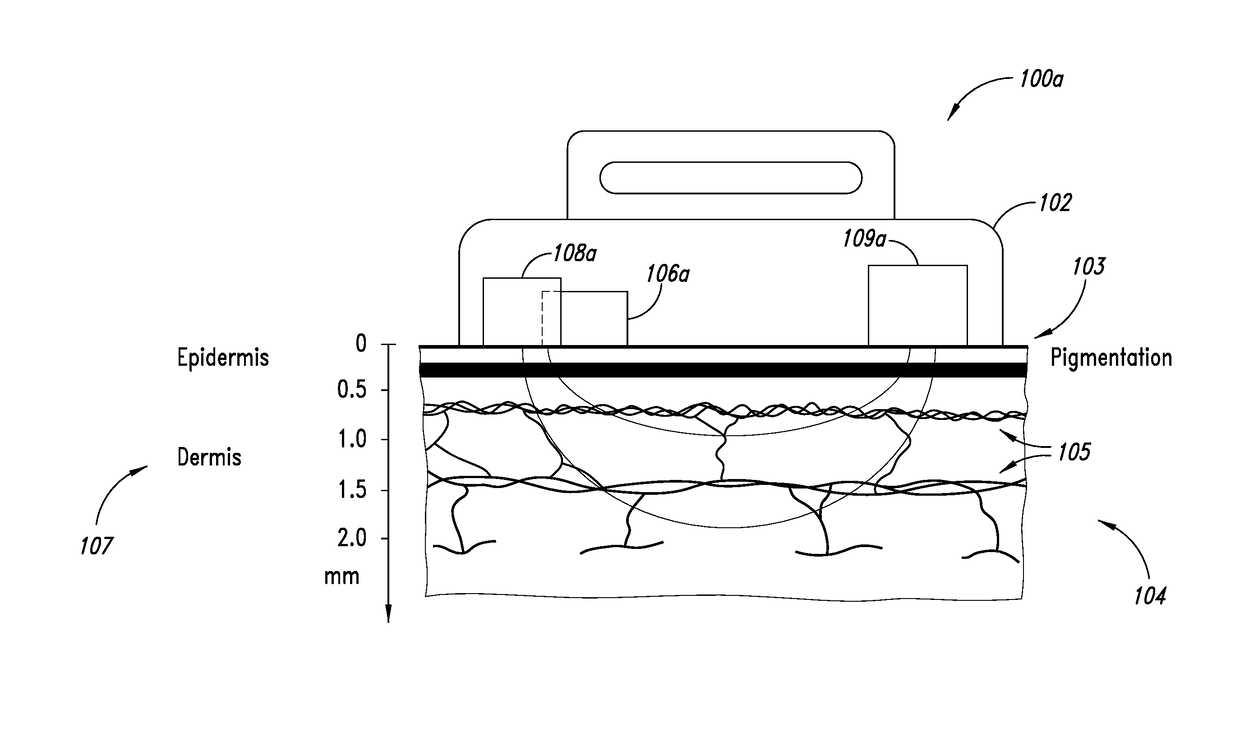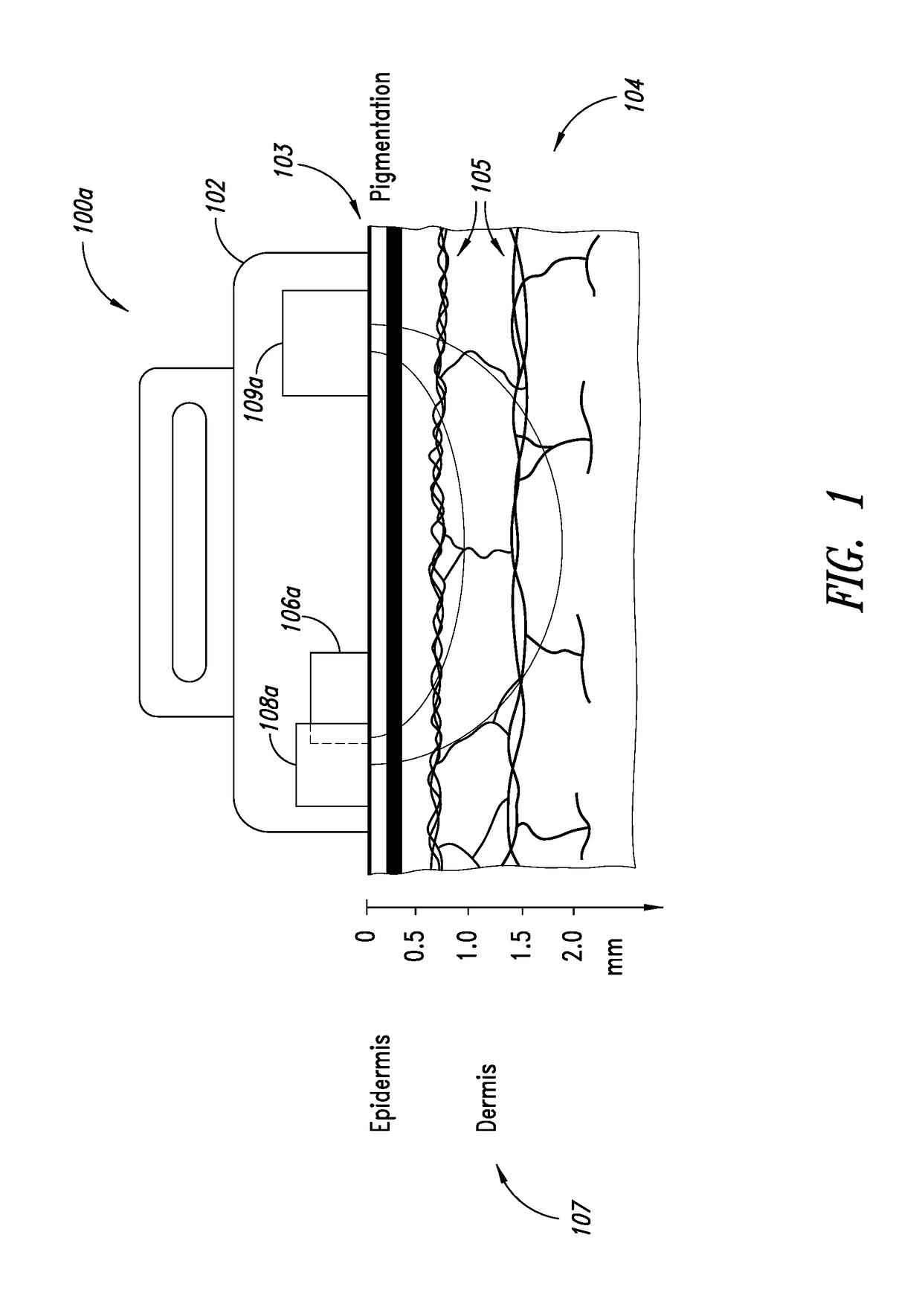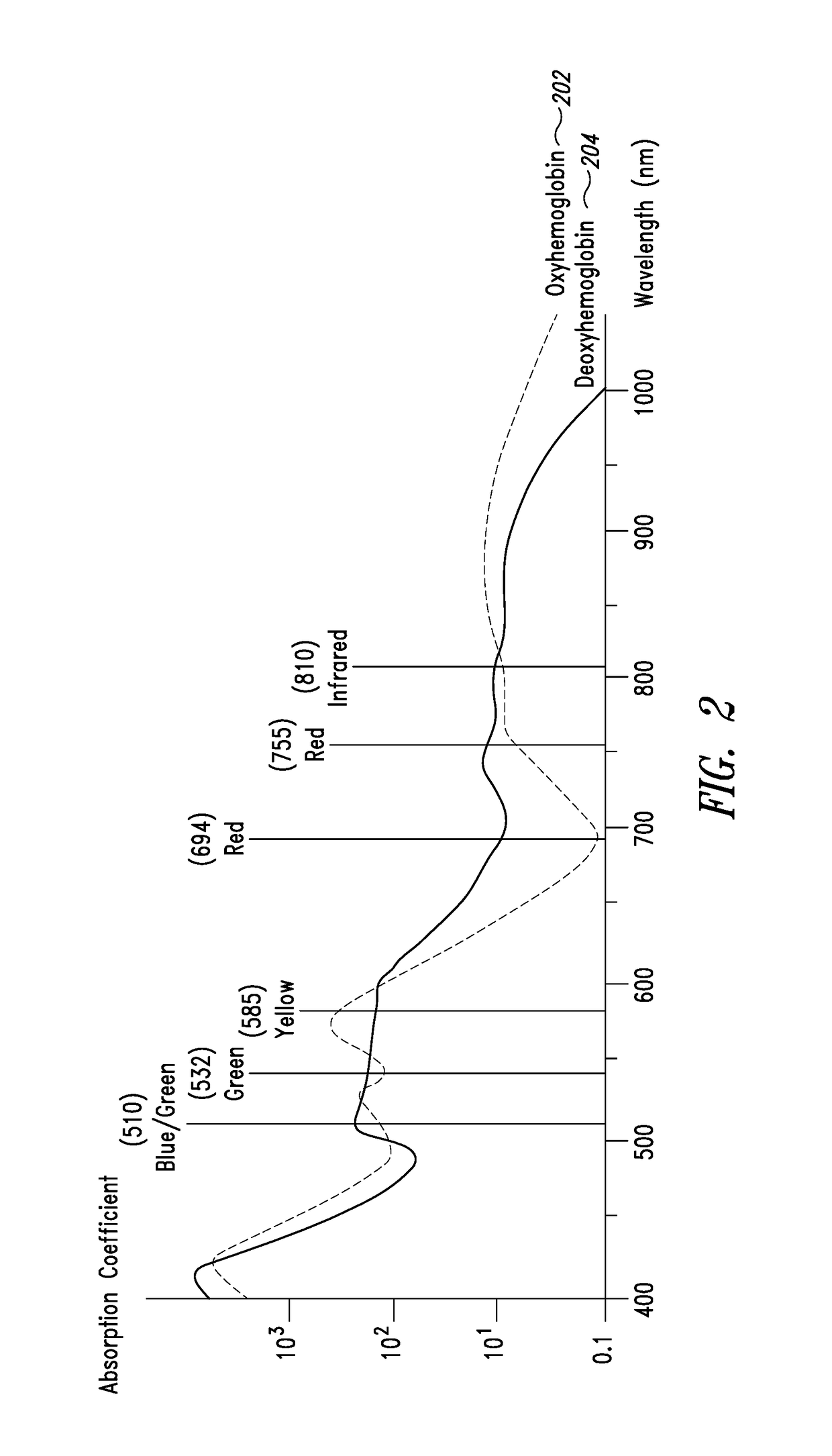Motion compensation in photopletysmography-based heart rate monitoring
a heart rate monitoring and motion compensation technology, applied in the field of photopletysmography (ppg)based heart rate determination, can solve the problems of noise corruption and unreliable heart rate determination
- Summary
- Abstract
- Description
- Claims
- Application Information
AI Technical Summary
Benefits of technology
Problems solved by technology
Method used
Image
Examples
Embodiment Construction
[0018]FIG. 1 shows a cross-sectional view of heart rate measurement device 100a positioned near the skin 103 of a biological body 104. The heart rate measurement device 100a is used to measure the heart rate of the biological body 104 using photopletysmography (PPG). The heart rate measurement device 100a includes a probe 102 having a first light source 106a, a second light source 108a and a photodetector 109a. The probe 102 is positioned near the skin 103 of the biological body 104 (and may, for example, be in contact with the skin 103). Light emanating from the first light source 106a and the second light source 108a is captured by the photodetector 109a after having at least partially penetrated the biological body 104 and been reflected by the biological body 104.
[0019]PPG is a non-invasive technique for heart rate measurement and detection. PPG relies on the principle that blood components, such as oxyhemoglobin and deoxyhemoglobin, reflect back light having certain wavelengths...
PUM
 Login to View More
Login to View More Abstract
Description
Claims
Application Information
 Login to View More
Login to View More - R&D
- Intellectual Property
- Life Sciences
- Materials
- Tech Scout
- Unparalleled Data Quality
- Higher Quality Content
- 60% Fewer Hallucinations
Browse by: Latest US Patents, China's latest patents, Technical Efficacy Thesaurus, Application Domain, Technology Topic, Popular Technical Reports.
© 2025 PatSnap. All rights reserved.Legal|Privacy policy|Modern Slavery Act Transparency Statement|Sitemap|About US| Contact US: help@patsnap.com



